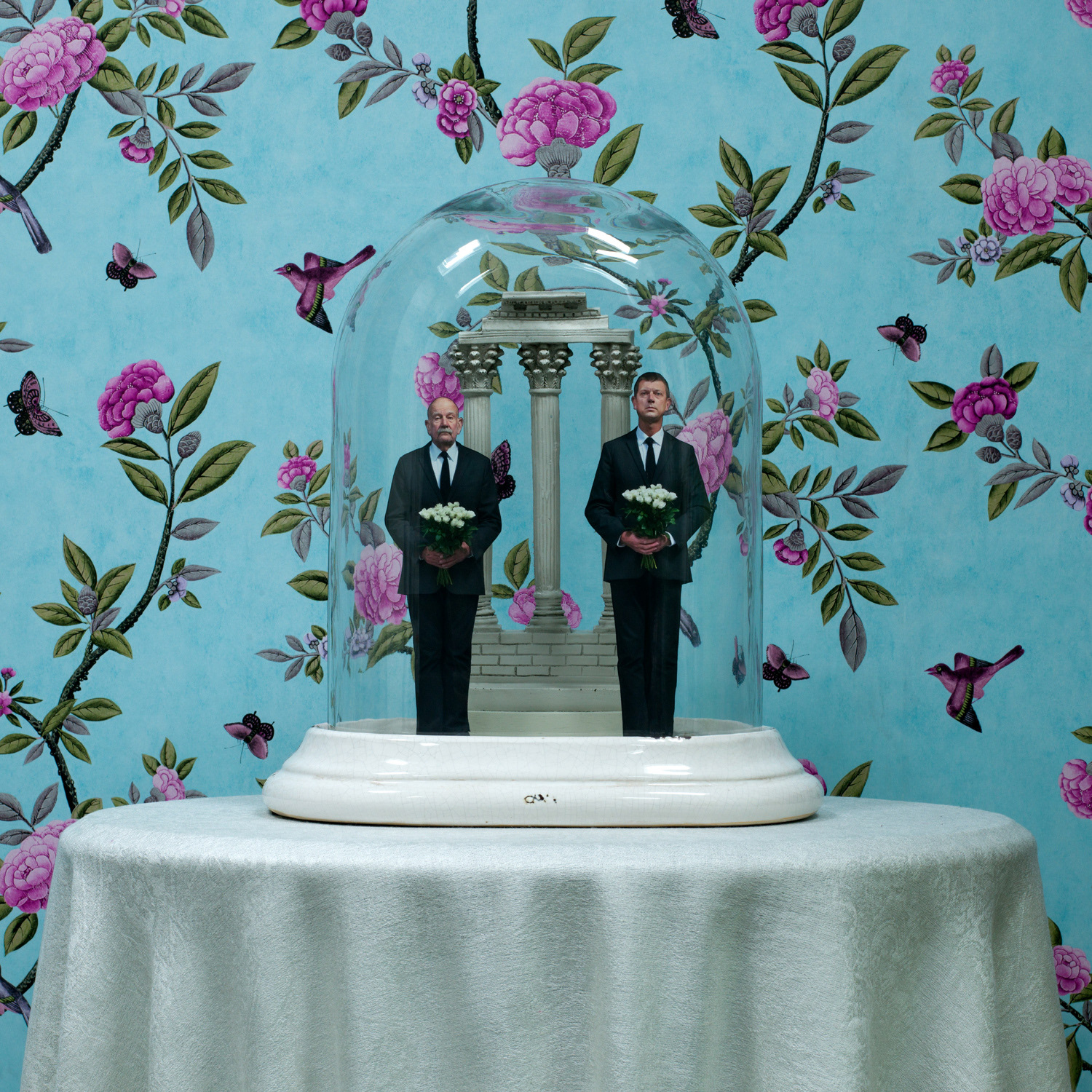
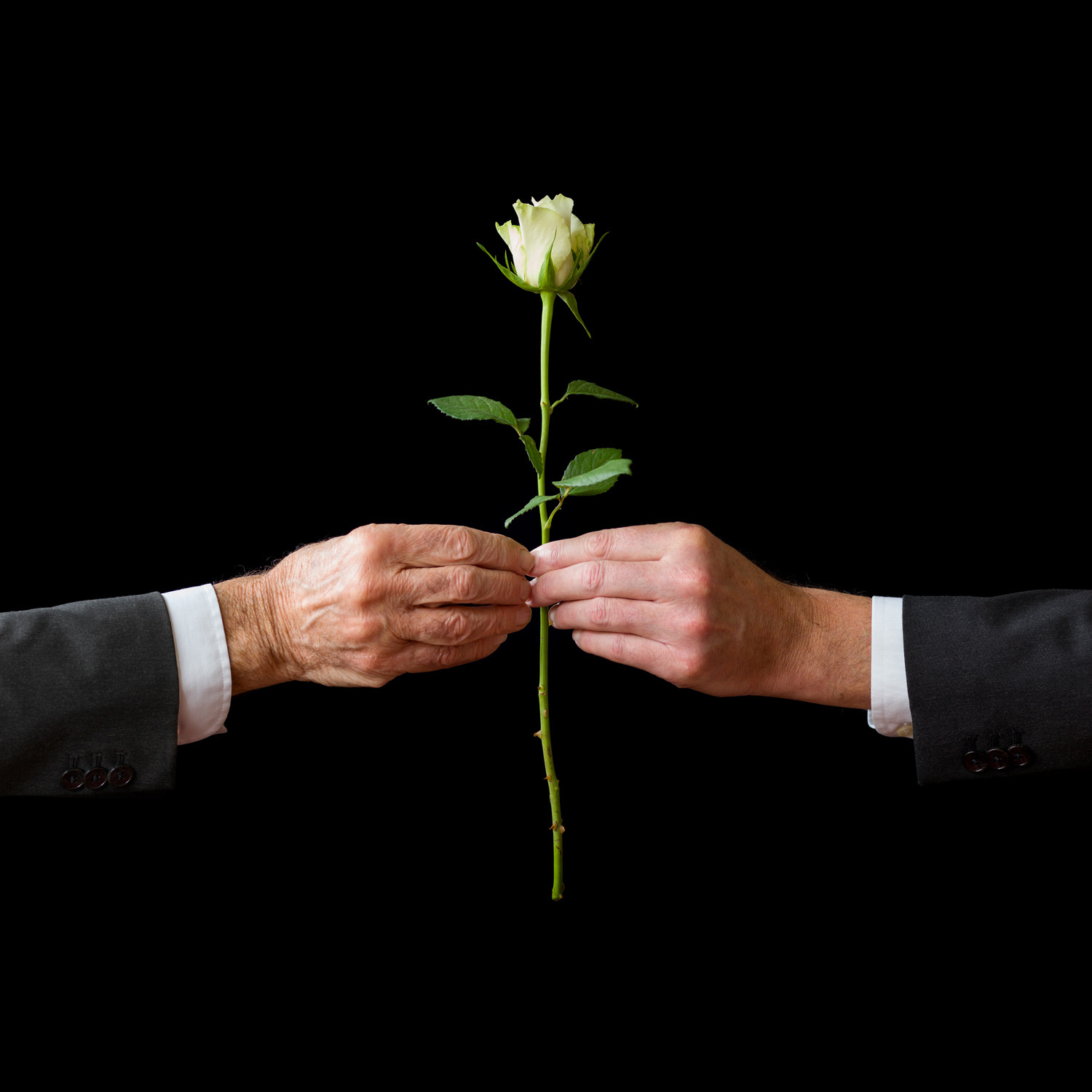

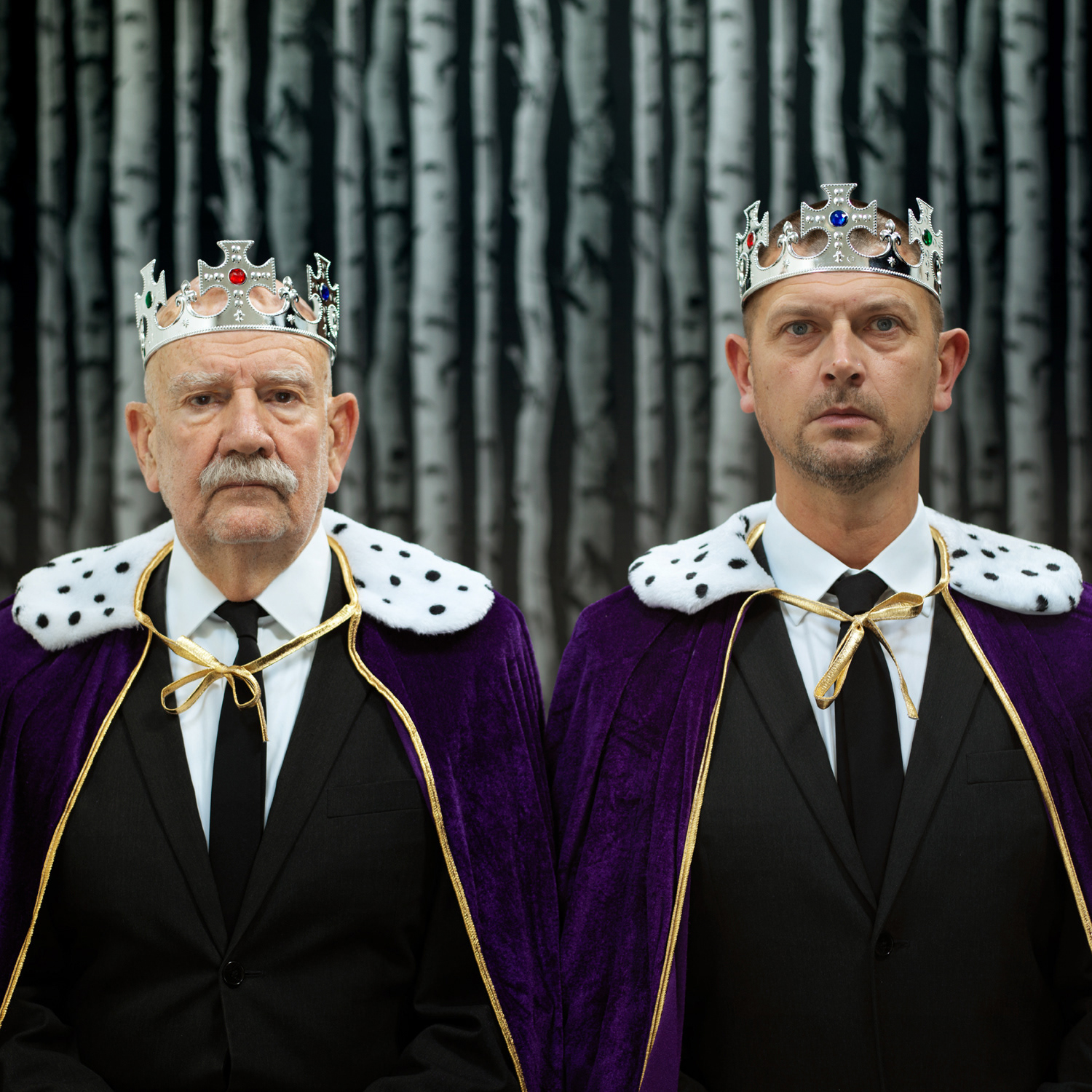
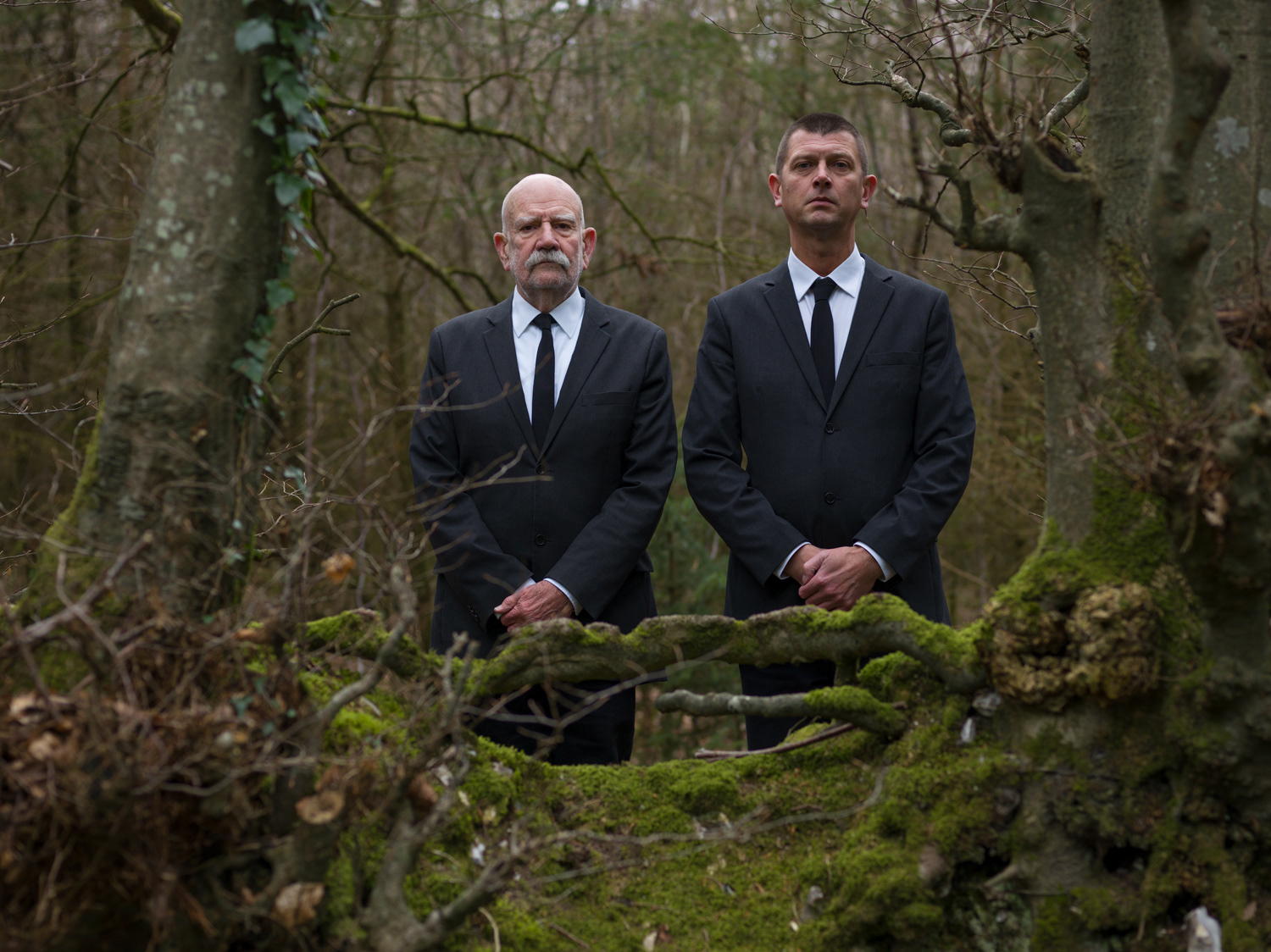

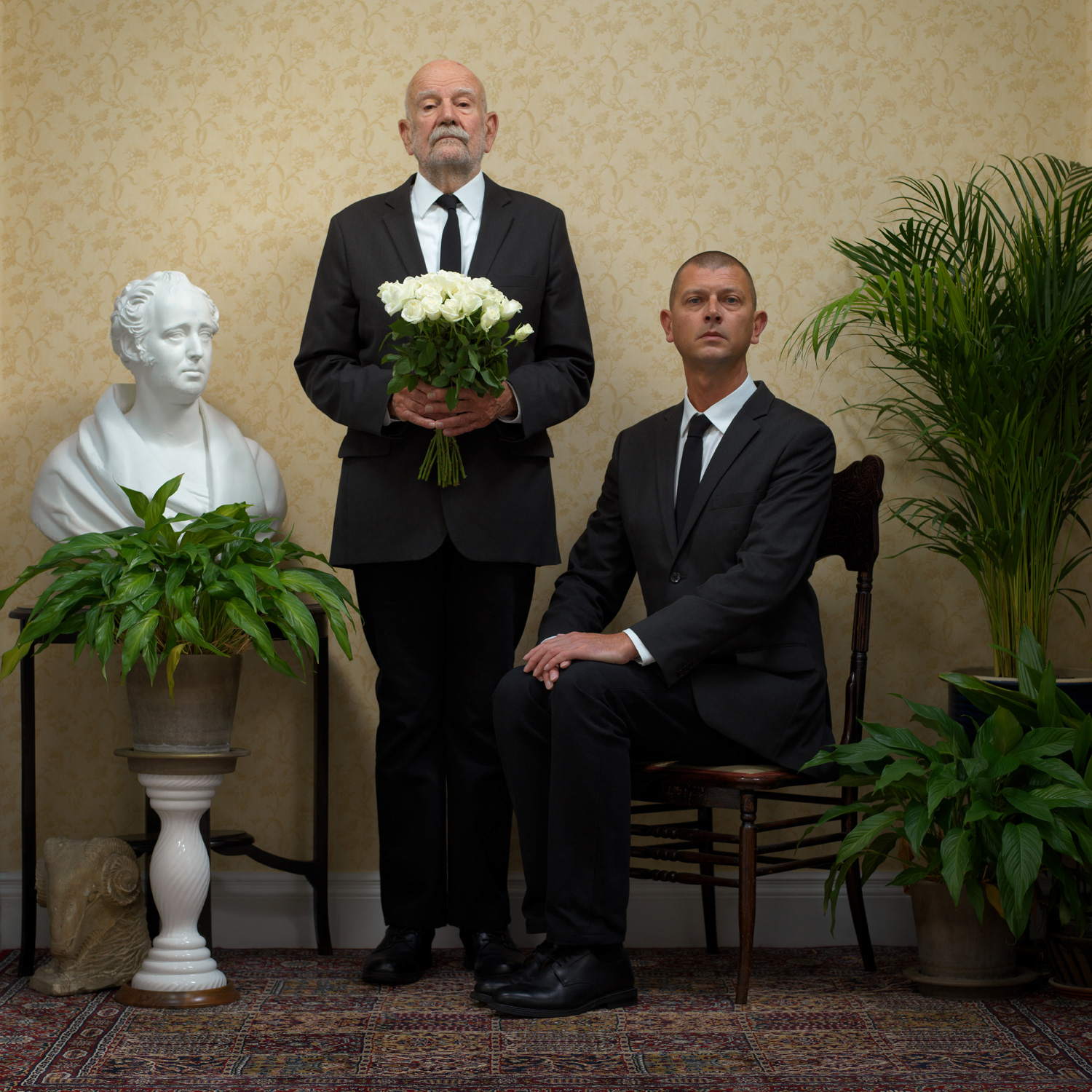
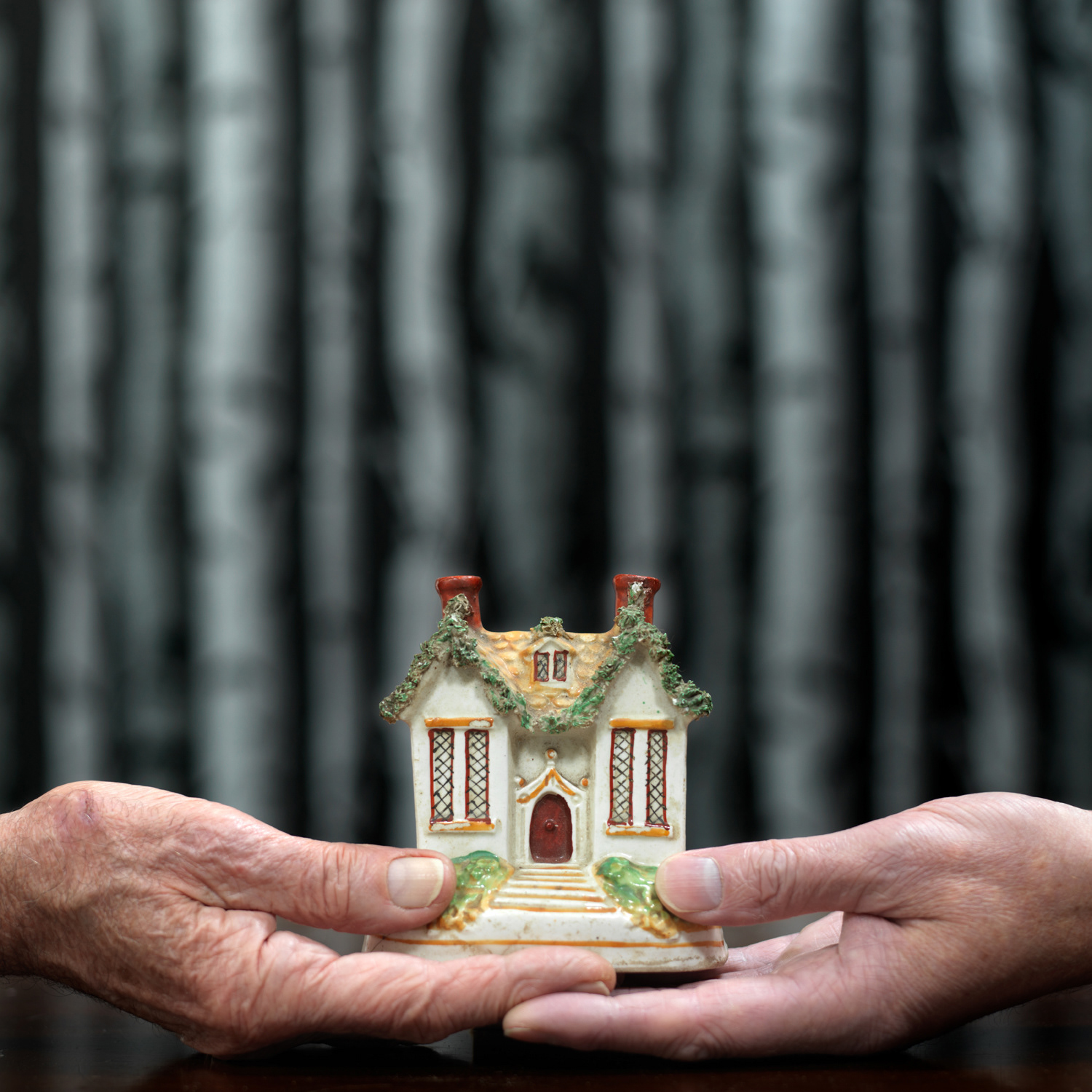
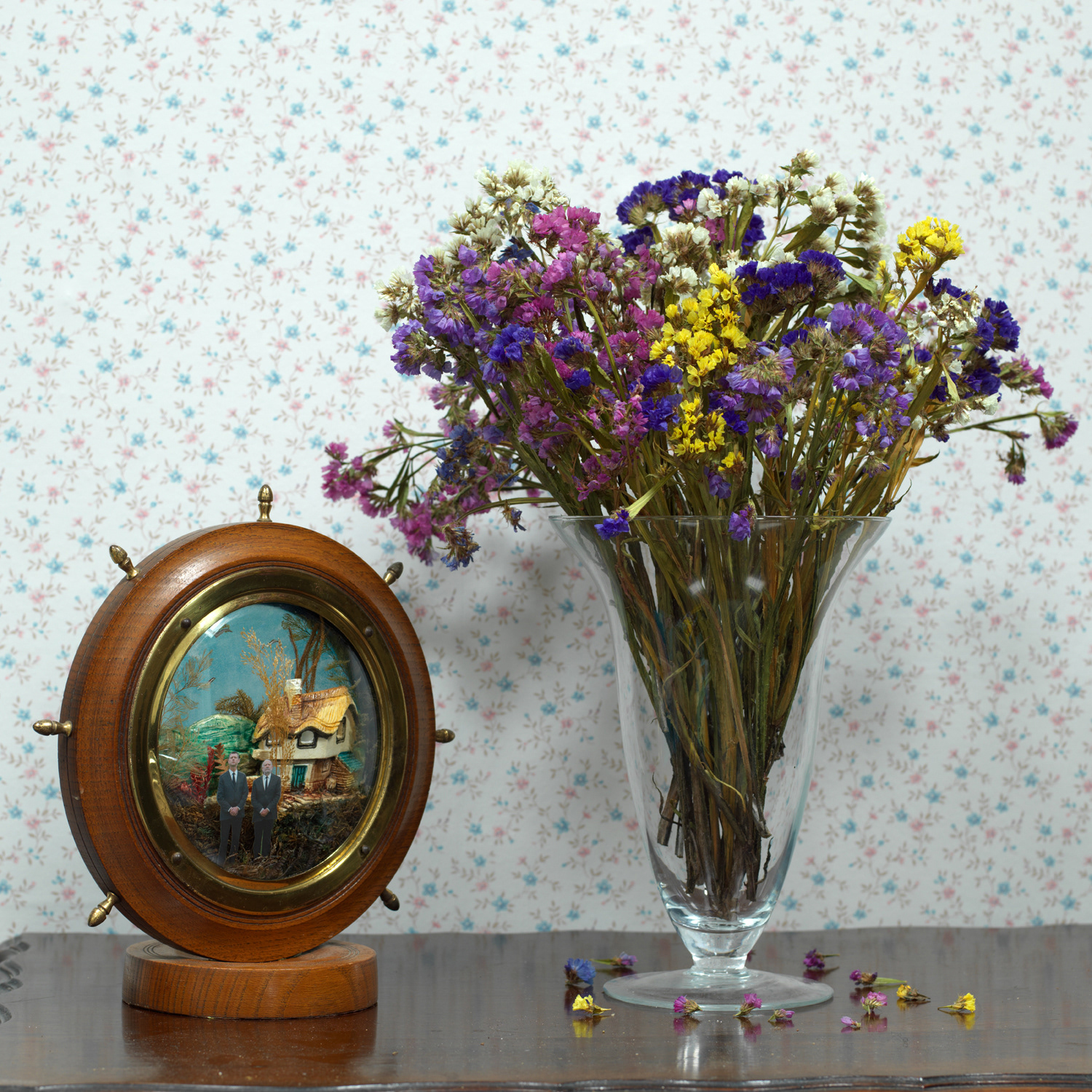


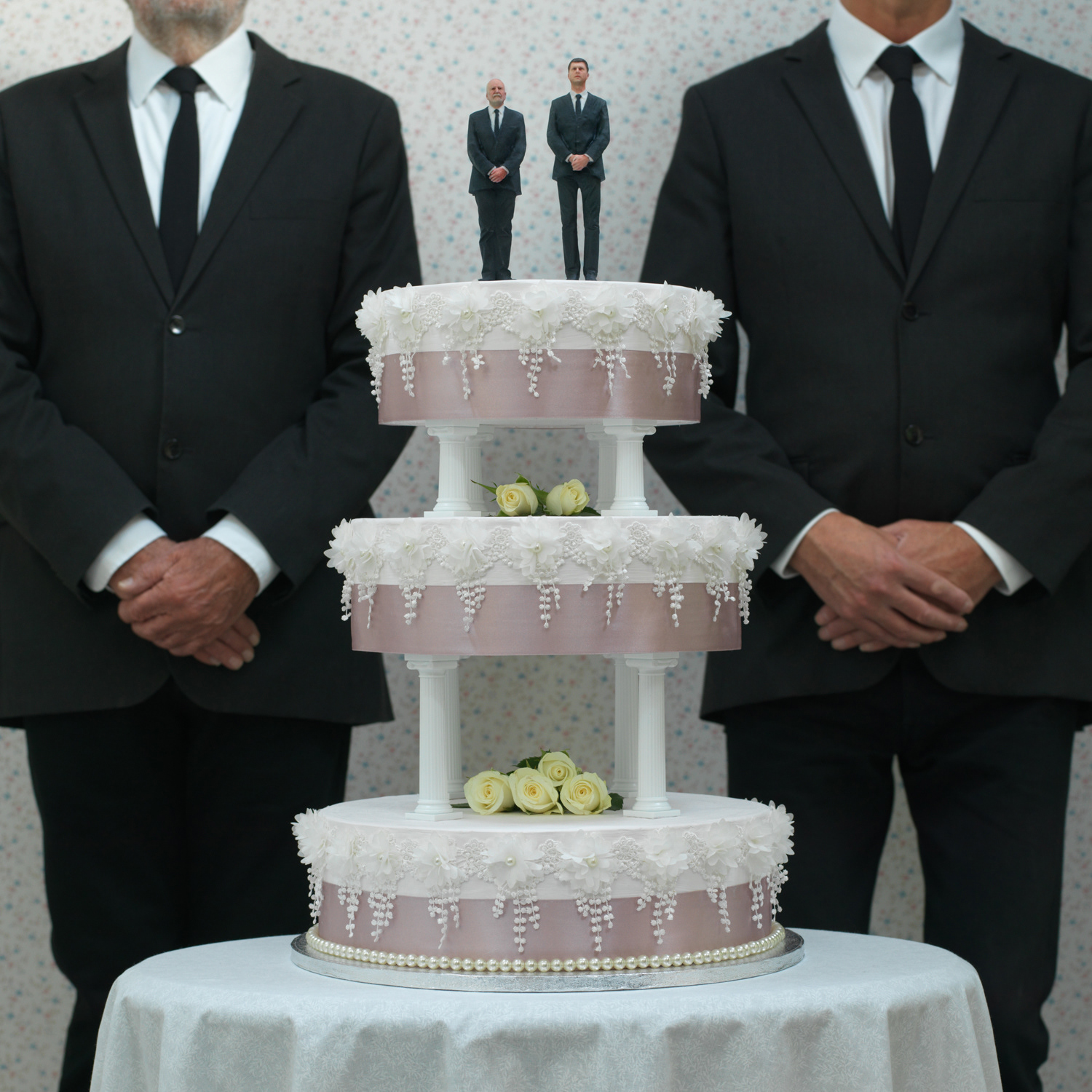

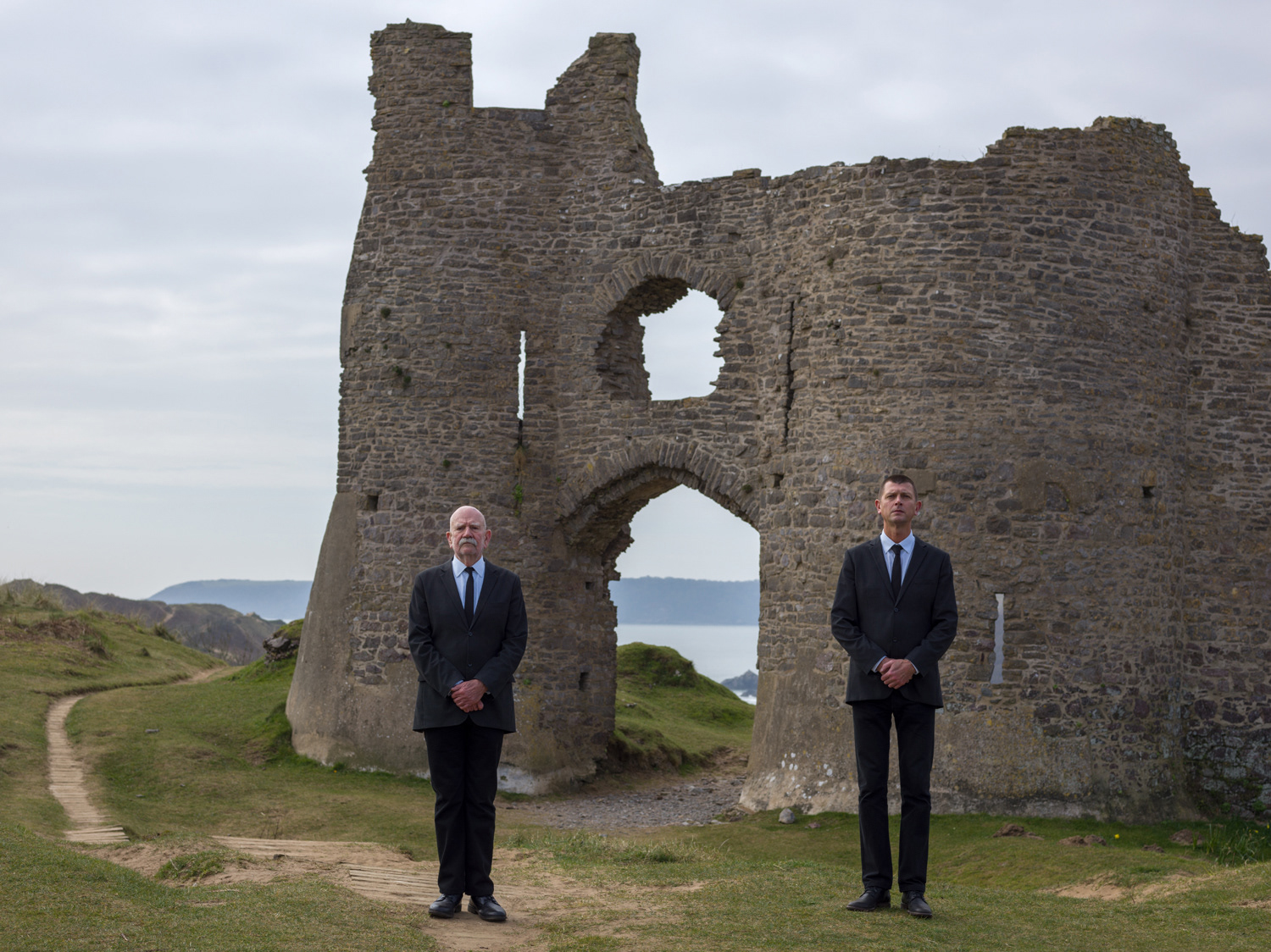
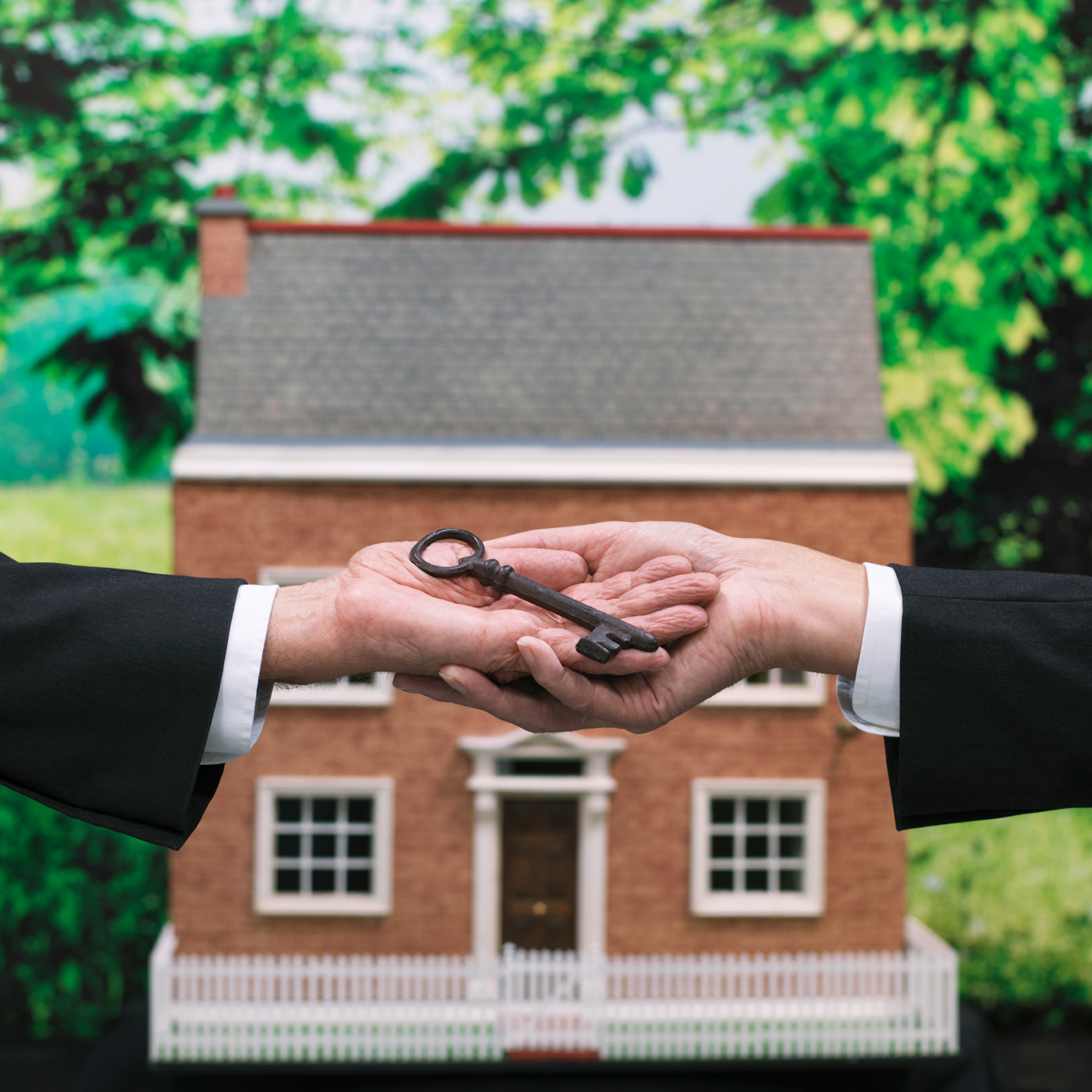
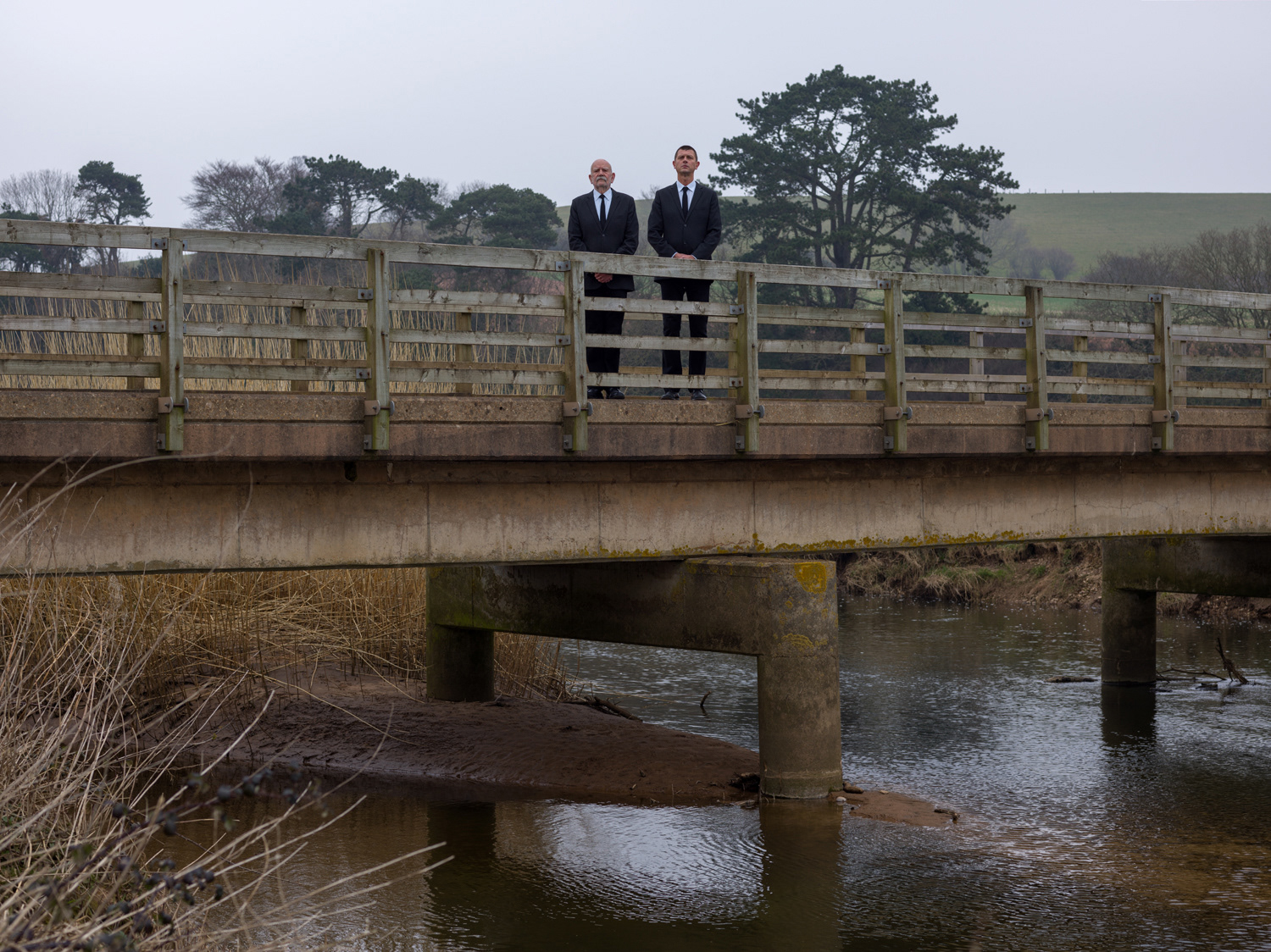
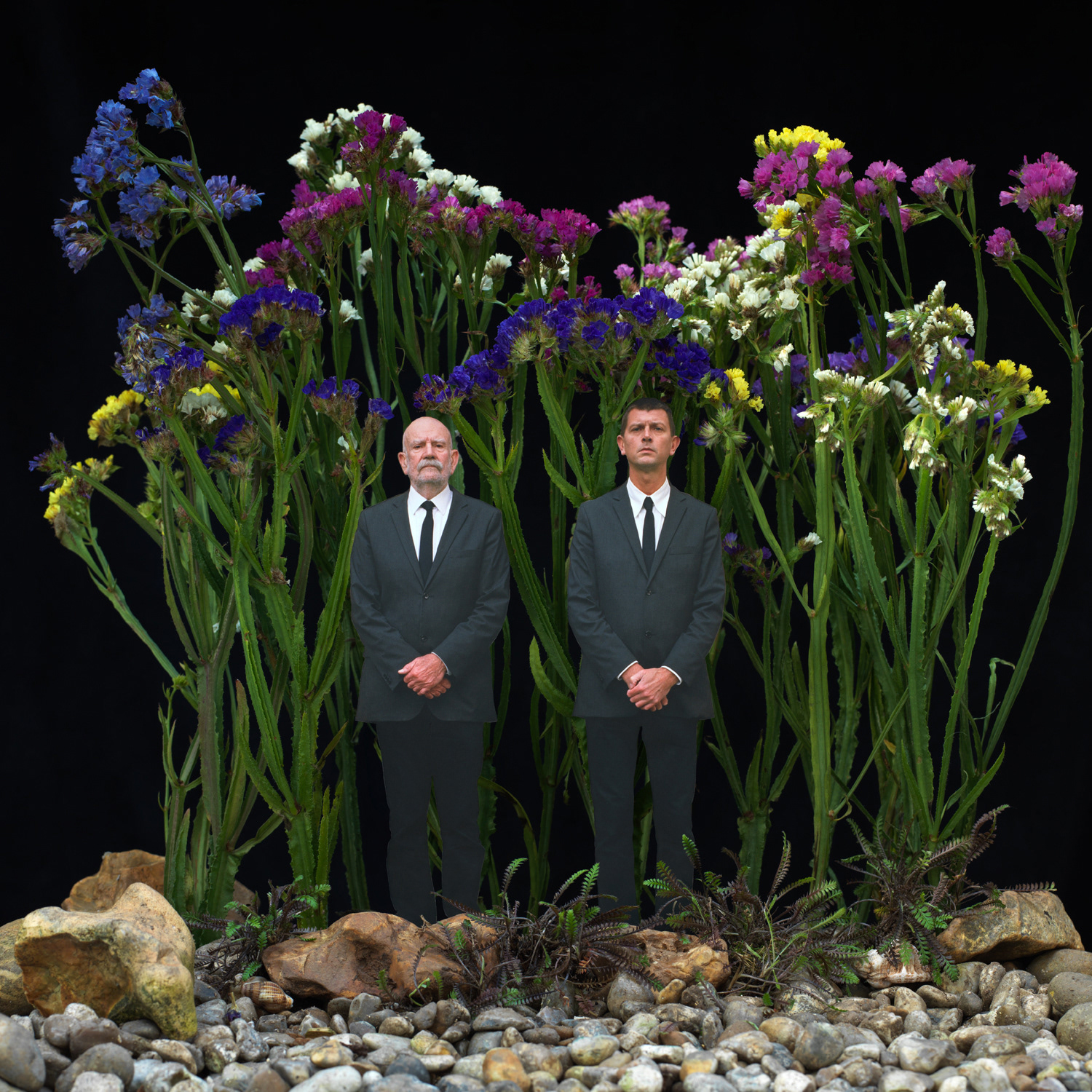
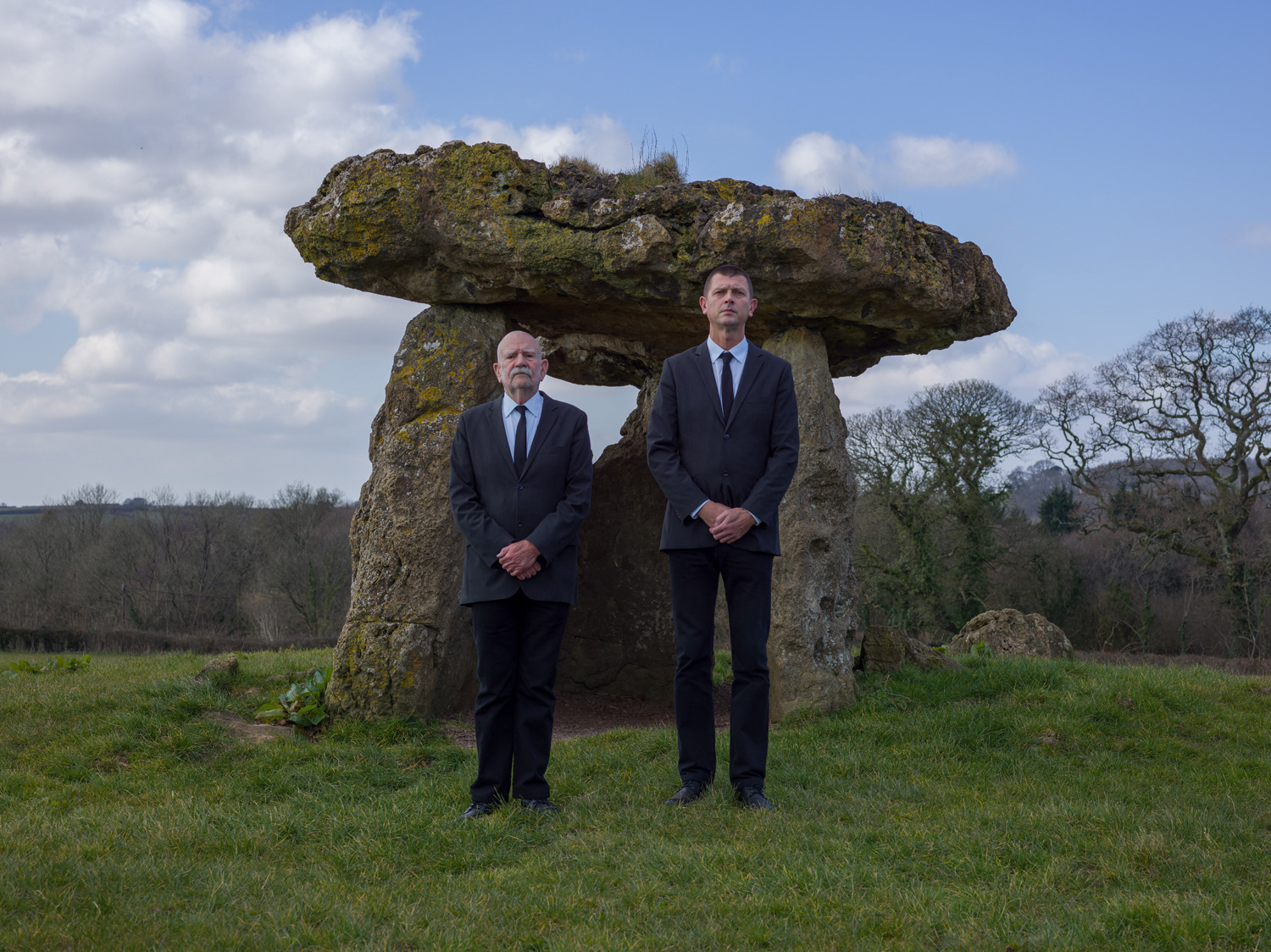
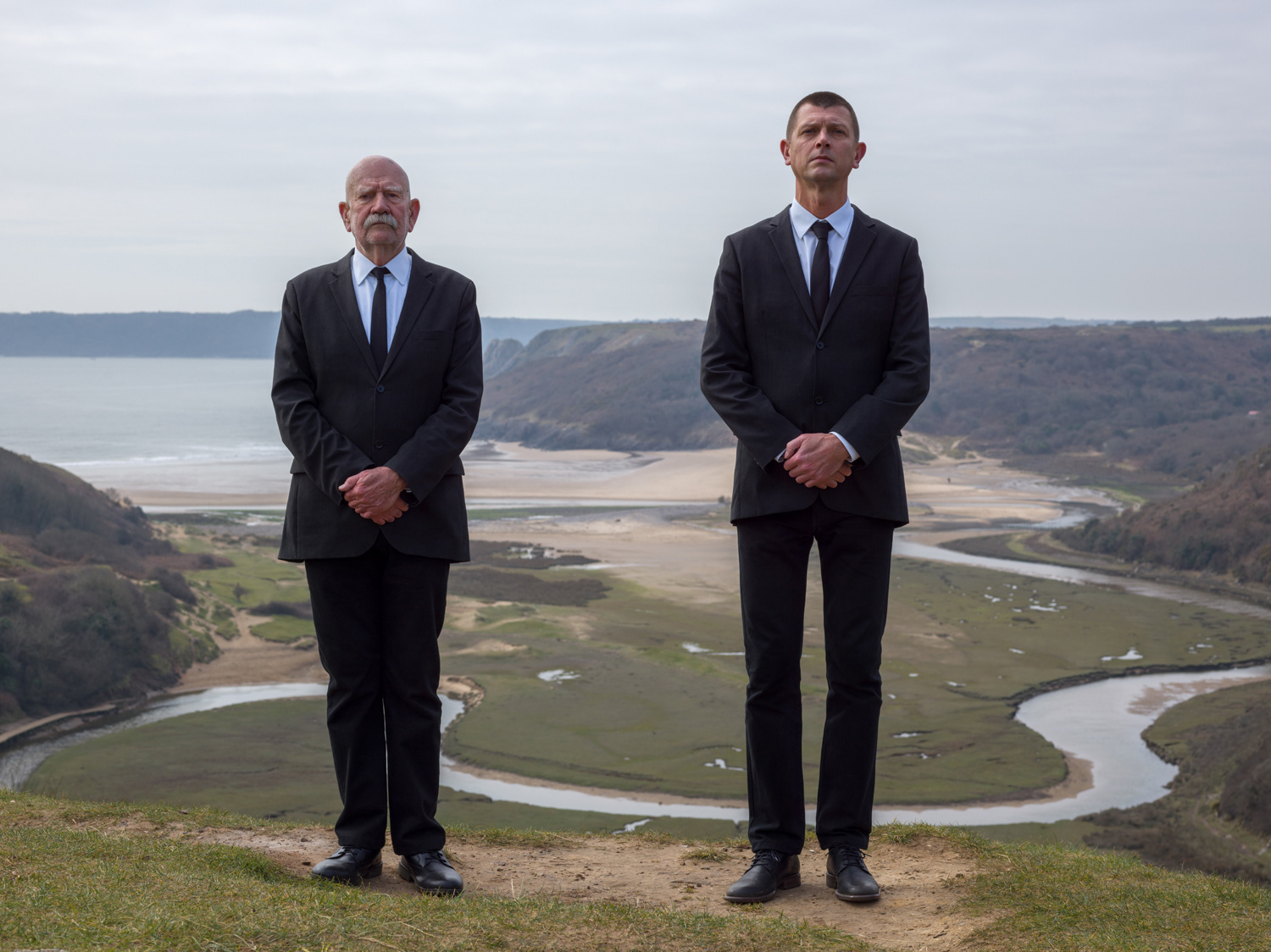
a photographic ‘conversation piece’ 2016 In many cultures, fairy tales provide a framework for presenting social codes and adult sexuality to a child unable to comprehend the social conventions of later life. The works were initially inspired by Mario Pratz’ writing on the ‘conversation piece’ in western art history, in particular, his observations of the wedding portrait. In Jan an Eyck’s portrait of Giovanni Arnolfini and Giovanna Cenami (Arnolfini Wedding Portrait 1434) Mario Praz says that “the family group portrait reached its complete definition”.1 He argues that the emergence of a bourgeois class in northern Europe leads to an interest in representing both the family group and the surroundings of the sitter. The desire to paint the family within an environment or landscape would become what Praz defines as the ‘conversation piece’. The development of this genre of portrait painting reached a highpoint with Thomas Gainsborough whose portrait of Mr & Mrs Andrews (1750) depicts the married couple in the landscape which they live and possess.Praz declares the Gainsborough painting is “a perfect mirror of eighteenth century English society”.2 The ability to represent one’s family in the eighteenth century depended on the wealth of the subject/sitter to employ a portrait painter. The emergence of photography in the nineteenth century led to a greater democracy of representation, but still the lower and working classes had little autonomy over the representation of their loved ones. Similarly, in a culture where same sex relationships were not acknowledged in law, the representation of same sex couples exist, but are usually hidden or defined in other contexts. When one looks at a number of the joint portraits painted on the ‘grand tour’ one might almost believe that these were images of couples if one didn’t understand the conventions of the day. With the introduction of gay marriage into law in a number of European countries and some American states, certain western powers are declaring an acceptance of same sex couples. Often, the photography that depicts these unions adopt the principles that have evolved photographically around the heterosexual union. In one sense, this might be seen as an act of transgression or transcoding, taking ownership of the convention and making it one’s own. But there is also the possibility of adopting make-belief and returning to a time in The allusion to the Cottingly fairies of a same sex couple rummaging around in the undergrowth is one that is fused with double entendre, a place of fairy tale unions between princes and princesses, houses in the country and cottages in the woods. 1. Mario Praz Conversation Pieces 2. Mario Praz Conversation Pieces


















